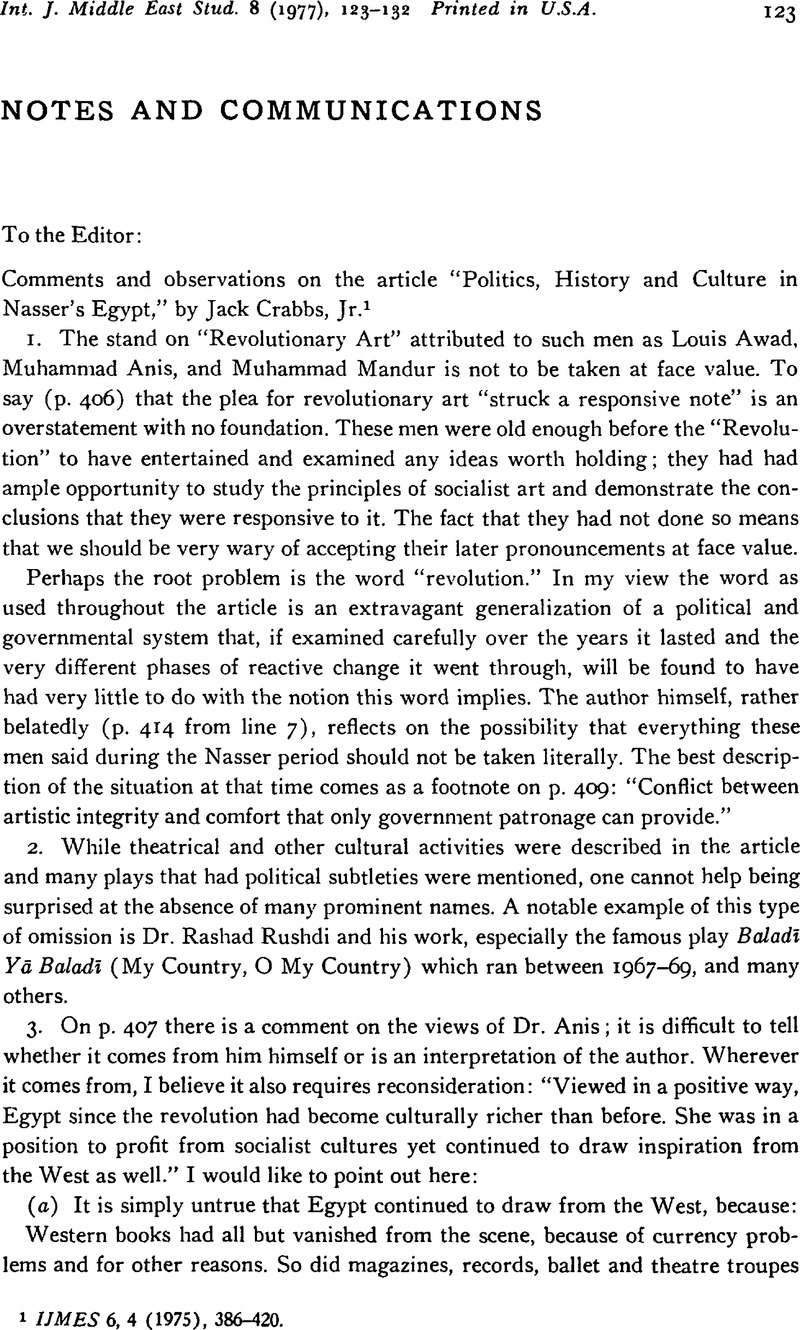No CrossRef data available.
Article contents
Notes and Communications
Published online by Cambridge University Press: 29 January 2009
Abstract

- Type
- Notes and Communications
- Information
- Copyright
- Copyright © Cambridge University Press 1977
References
page 123 note 1 IJMES 6, 4 (1975), 386–420.Google Scholar
page 127 note 1 The new version of this review is slightly different from an earlier version dated April, 1971, which was marked “Forthcoming in Linguistics.”
page 127 note 2 See reviews: Anshen, Frank S., Language, 47, 4 (1971), 955–957CrossRefGoogle Scholar, and Brame, Michael K., Foundations of Language 7 (1971), 556–591.Google Scholar
page 127 note 3 Kaye wrote more than 1,200 words on what he called “typographic and stylistic infelicities.” He tells us (p. 110) that the “stylistic infelicities, misspellings etc.” mentioned in his review “have been found without even trying.” Kaye would have probably written a complete monograph had he tried a little harder. The following (p. 111) indicates Kaye's skill in this respect: “Page 21 line 20, read ‘(he)’ for ‘(he)’. Footnote 16, p. 24 read “The Sound Pattern of English” for Chomsky and Halle's “Sound Pattern of English.” This title is often cited erroneously by others. Even a superb researcher like Robert Hetzron calls it Sound Patterns of English in “Towards an Amharic Case-Grammar,” Studies in African Linguistics, vol. 1, 3 (1970, p. 353), in references.”Google Scholar
page 128 note 4 Typical examples occur in paragraphs 5.4–5.6. (pp. 100–101) and paragraph 6.2 (p. 106). The latter reads as follows: “Pages 91 ff. discuss the ordering of the rules as revised earlier in the work. The terribly interesting problem of colloquial Arabic /wiš/ ‘face’, i.e. wišš is discussed on page 96. Pages 96–100 discuss the stress rules for Druze Arabic. Pages 100 ff. discuss stress in Cairo and Baghdadi Arabic. Pages 101–2 include a chart (summary) of rules for Palestinian Arabic (Mukabbir and Druze), Baghdadi Arabic and Cairene. The author's use of /q/ for Cairene (pp. 103. 105 and passim) should, of course, be explained somewhere, since Cairene does not have /q/, i.e. [q], but rather exemplifies /q/ → /'/. /q/ is, however, a marginal phoneme in Cairo Arabic and exists in loanwords from Cl. Ar. or MSA, or from another dialect having /q/, i.e. [q].”
page 129 note 5 Unsupported comments of this nature occur several times throughout. See, for example, p. 100, line 20, p. 102, line 14, and p. 104, line 19.


